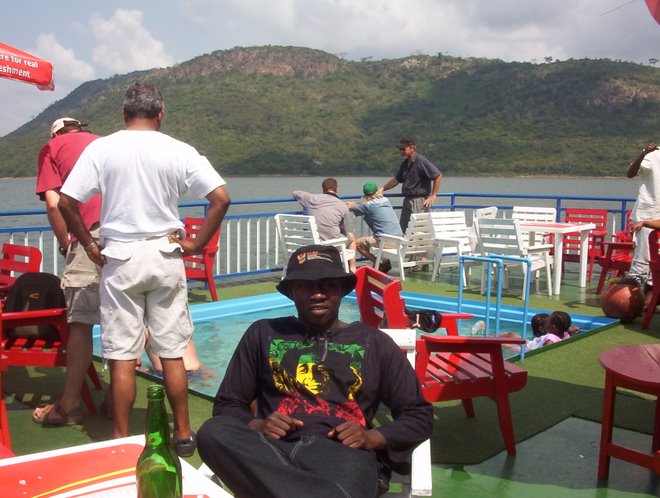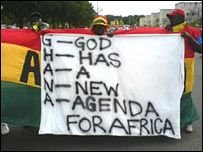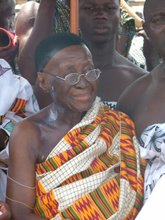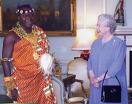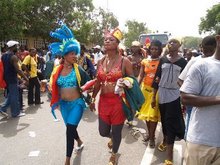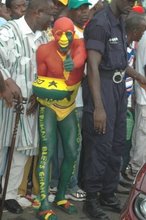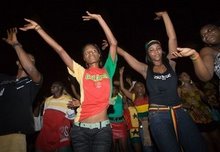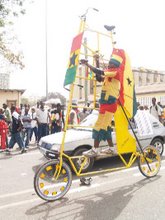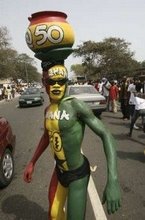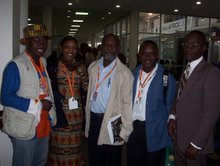
ABOUT THREE YEARS AGO, on February 9, 2007, the sun quite suddenly set at noon. In the brutal darkness, we lost Samuel Ennin, a distinguished Kumasi-based journalist. He was shot and killed in cold blood by some assailants just a few days after I, along with two other professional journalists, had met with him and we had spoken at length about a wide range of issues including his decision to launch his own private newspaper and plans of strengthening the journalists association in Kumasi. Even though the police claim they have arrested two suspects whom they have linked to the murder, the two are yet to be tried in court three years on. The case seems to have been stuck at the moment with the docket moving up and down in the hands of the police and the Attorney-General’s Department. As it stands now, we are yet to establish a motive for the dastardly act even though the police would want us to believe that it was purely a robbery incident. If indeed the crime was committed by criminals in the course of their daily activities, what then is preventing the police, known very well for unravelling the mysteries surrounding killings of this nature, from proceeding with the trial especially when they have two suspects in their custody? Former Ashanti Regional Police Commander, DCOP Frank Adu Poku who is currently the Director of Police CID at the time of the incident gave a number of assurances that they would definitely get to the bottom of the matter and so when he publicly, announced that he had arrested some suspects, the Ghana Journalists Association (GJA) even gladly redeemed their pledged of a GH¢1000 as a handsome reward for the informants. In April 2007, the two suspected criminals were paraded before a crowded press conference in Kumasi, at which the then Ashanti Regional Commander of Police, DCOP Frank Adu Poku explained the arrests. He gave the names of the suspects as Sheriff Kabore, 27, and Kwame Ayew alias "Red”, also 27, whom he said were arrested on suspicion of killing the late Ennin.
He said Sheriff Kabore was arrested on a Kumasi-Tamale bound bus whilst Kwame Ayew was arrested at Gbilensa near Sandema. The Police Commander categorically said the late Ennin was a victim of armed robbery since investigations were emphatically established that there was no other motive for the killing other than robbery. DCOP Adu Poku said Sheriff Kabore and Kwame Ayew and two accomplices had seized a vehicle with registration number AS 9577W around the Kumasi Polytechnic at about 7:50pm on February 9. From there the group drove to Aburaso, a suburb of Kumasi, where they seized another vehicle, a VW Jetta with registration number AS 5598W. It was with this vehicle that he said the suspects drove to the Libra Spot at Pankrono, where they shot and killed the late Samuel Ennin. Afterwards, they allegedly abandoned the vehicle at Ash Town. Items retrieved from Sheriff Kabore and Kwame Ayew after their arrest, the Commander said included two pump action shotguns, 24 live cartridges, one military cap, scissors, hoods and a talisman. DCOP Adu Poku made it known at the time that Kwame Ayew was already behind bars having been convicted and jailed for 24 years for his role in previous robberies. Sherrif Kabore was also later jailed for his role in previous robberies. Journalists at the press conference asked a number of questions on how the police could link the suspects to the murder of Ennin and the answers the police gave were not convincing enough. Their expectation was to allow the trial to commence so as to witness the unfolding events in court as to how the two suspects would have been linked to the murder. Even though the two suspects are currently behind bars on different criminal offences, their role in the said robbery and murder of Ennin is yet to be proven in court.
The question is, did the police hurriedly pick the two suspects and just paraded them as the culprits in Ennin’s case just to calm nerves simply because journalists and people from all over were putting pressure on them to unravel the incident? Over the years, the police have repeatedly announced the imminent start of the trial of the suspected killers of Ennin, only to postpone it to a later date that never comes. We are told anytime we make enquiries that the Attorney General still have the docket and when we check from the AG too, we are told its gone back to the police. Who is telling the truth and what are we waiting for. If the police think they have not been able to link the two suspects to the murder and that they are looking for other people, they should come out publicly to tell us. For me it would not be a surprise if the police come out to tell us that the two suspects have nothing to do with the case and that they are still investigating and looking for the real culprits. I challenge them to contradict me by finally starting the process of trial.
It was in 2001 in Kumasi, that some colleagues introduced me, a fresh graduate from the Ghana Institute of Journalism (GIJ) to a Kumasi based journalist, distinguished by his baritone and hoax voice, a man named Samuel Ennin. Ennin was a dedicated journalist. He loved journalism and was very vocal. He lived for journalism. His passion for professional excellence and integrity defined the news section of Ashh FM, of which he was the News Editor and General Manager. As a result, young journalists at the radio station and their twi news bulletins were distinct from other radio stations in the metropolis, debarred of proverbs and innuendos as has characterized the airwaves in recent times. Ennin was indeed a bold person and had political ambitions but he never allowed that to interfere with his professional work as a journalist. On that February Saturday dawn, I was asleep in Kumasi when a colleague, Gabe phoned me at about 4:30 a.m. to say he had been informed Ennin had been shot and that his information was scanty so he wanted to know more from my end. Just before I told him it was news to me, the phone call dropped so I called back and Gabe could not immediately tell whether Ennin had died or was in hospital receiving treatment, neither was he able to tell me where the incident had happened. I called a couple of friends who equally did not have details of the incident. I tried to go back to bed till it was about 6am but I simply couldn’t sleep.
I tuned in to Ashh FM, where he worked only to hear of funeral dirges being played on air, it was then that it pricked me that Ennin might have died. I called a couple of friends afterwards and it was confirmed to me that Ennin, the enterprising and dynamic journalist’s life had been snuffed out of him in a cruel, heartless and barbaric way by unknown assassins through gunshot.
Eyewitnesses said the slain journalist was attacked by his assailants at a drinking spot at Old Tafo, near the Pankrono Estate, and shot in the abdomen. The gunmen quickly fled the scene, having snatched a number of mobile phones from some people.
At the time of the attack, he was said to be carrying a bag which contained a substantial amount of money but the killers were said to have neither taken the bag nor the money which he had in his pocket.
Ennin bled profusely from the gunshot wounds and later died at the Komfo Anokye Teaching Hospital (KATH), where he was rushed for medical attention. At the time of the incident he was said to be in the company of three people — Kojo Fosu, a driver of the radio station, Seth Afranie, a former worker of Ashh FM, and Yaa Janet, a lady friend of Kojo Fosu’s — when the incident occurred.
Narrating his ordeal to the police Fosu said after they had taken some drinks and were about to disperse, the two “killers”, who were dressed in ordinary attire and wearing caps, arrived.
According to him, the “killers” first seized Janet’s mobile phone and fired a warning shot.
He said when he enquired from them as to why they had seized the lady’s phone, a confrontation ensued and in the process the gunmen bundled him onto the floor, rendering him unconscious.
He said he did not see anything again until he was resuscitated at the hospital.
On his part, Afranie explained that he had just stepped out of their sitting place to buy food from a nearby food vendor when he heard two gunshots from where they were sitting.
He said he rushed to the place, only to see Mr Enin bleeding from the midsection, after which he helped to carry the victim to a vehicle for the hospital.
Other eyewitnesses said they saw the killers arrive at the place in a white vehicle but they could not determine the type of vehicle.
They said they also saw the gunmen entering the drinking spot after going round the place for a while and that they saw some exchanges between the killers and another person where Mr Enin was sitting before one of them fired at Mr Enin.
According to the eyewitnesses, just after the act, the two men quickly rushed to the waiting car and fled.
Twice voted the Ashanti Regional Chairman of the GJA, the late Enin was very instrumental in the uplift of the image of the association in the region.
A native of Jacobu in the Ashanti Region, he was a 1991 graduate of the Ghana Institute of Journalism (GIJ).
He had stints with the Free Press newspaper where he was the Ashanti Regional correspondent, and Shaft FM in Obuasi, where he was the News Editor.
His voice was one of the most popular on radio in Kumasi during the mornings, being a panelist for the morning newspaper review on Ashh FM. He left behind a wife and two children
Following the passion his death generated in the country, people from all walks of life, including President John Agyekum Kufuor, Ministers of State, Members of Parliament and representatives of some political parties as well as media practitioners and social commentators across the country, attended the funeral ceremony held in Kumasi.
Anguish and grief characterized the sorrowful occasion and became manifest in the faces of family members, colleague journalists, friends, sympathisers and well wishers who thronged the funeral ground as early as 6 a.m. on that Saturday to express their condolences and pay their last respect to the sorely missed soul.
Tears flowed down the cheeks of many that filed past the mortal remains of the late Ennin, which was clad in black suit and a perfect tie to match. Various tributes were read in his honour after which he was laid to rest at his home-town, Biribiwomanmu near Jacobu in the Amansie Central District of Ashanti, on March 31. We are soldiering on, in our own way and still awaiting justice. Ennin will forever live in our minds.






